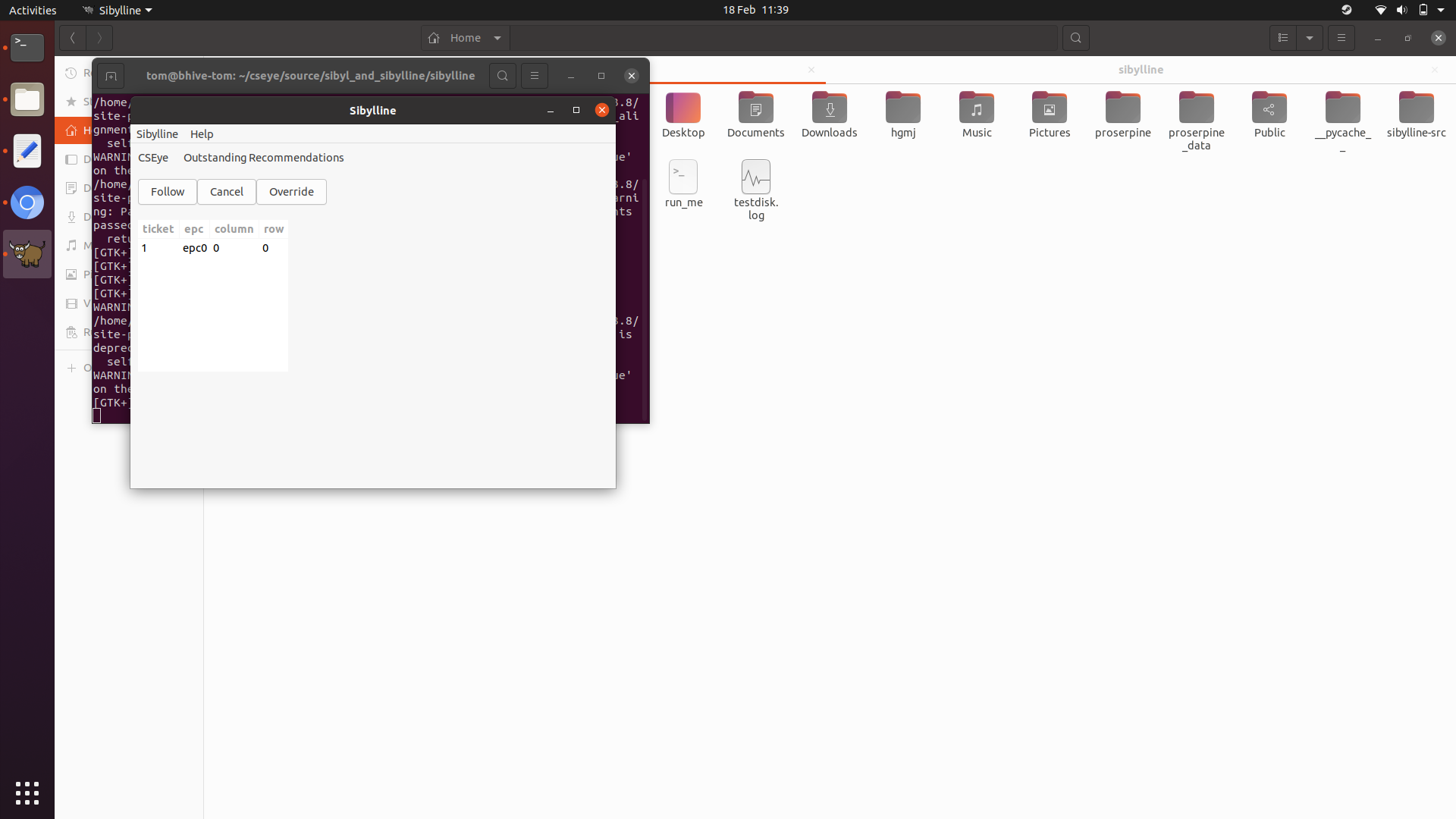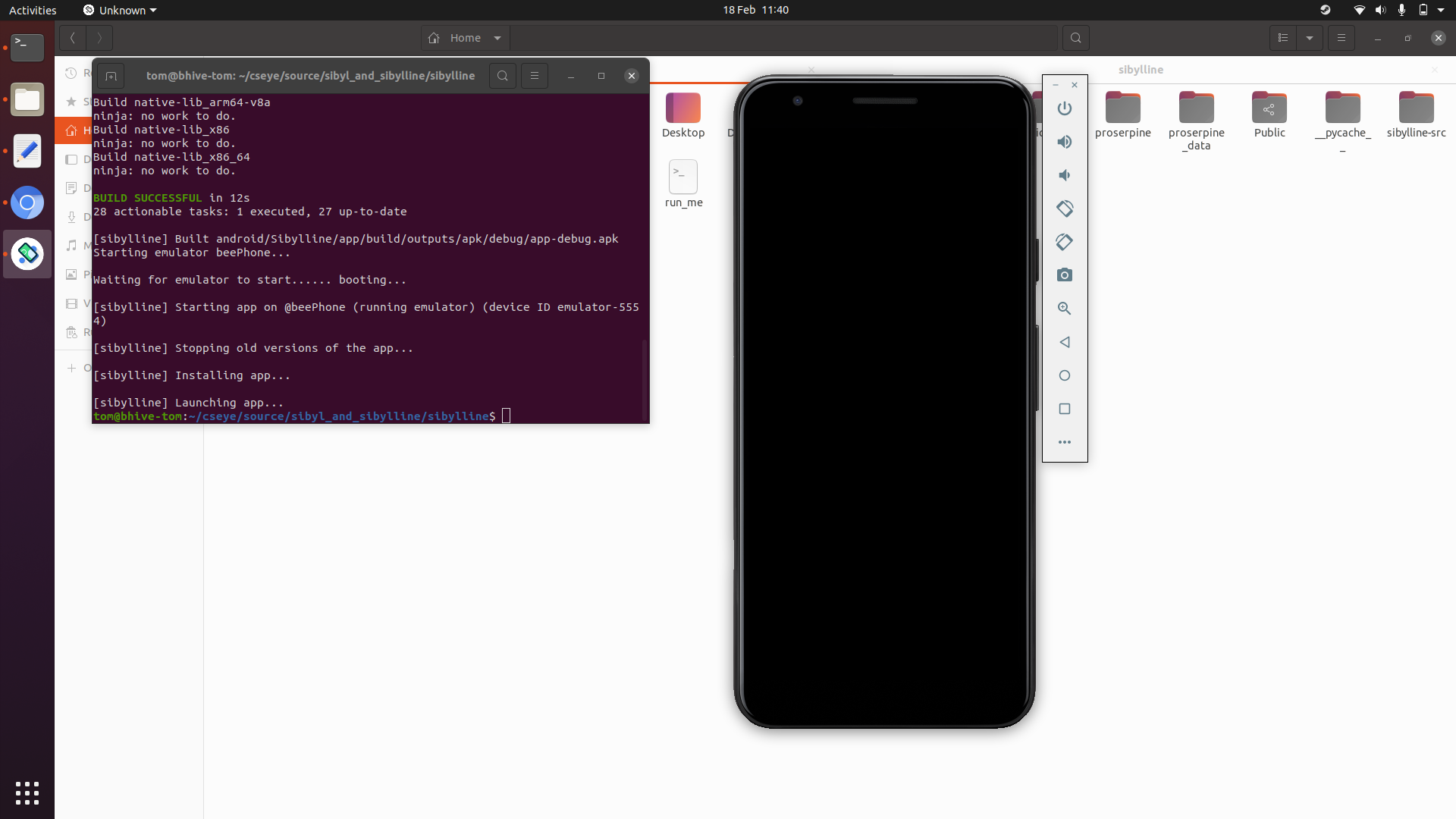@tomhosker Hi! I'd be grateful if you can install the full Android SDK from the Android website and see if a sample app launches properly in Android Studio. It'll help us diagnose at what layer the problem lies.
Closed tomhosker closed 3 years ago
@tomhosker Hi! I'd be grateful if you can install the full Android SDK from the Android website and see if a sample app launches properly in Android Studio. It'll help us diagnose at what layer the problem lies.
Hi this is my first submission so I'm not sure if I should be adding on or creating a new issue.
I'm getting the same issue, I can run the app successfully on windows but when I run it on Android the app opens but the screen remains blank.
I just wanted to provide an additional example of an app where this is occurring, although it may be for a different reason.
"""
A simple character generator for new players to D and D 5e, using questions about themselves or their ideal in game personality to create a character.
"""
# widget toolkit
import toga
from toga.style import Pack
from toga.style.pack import COLUMN, ROW, RIGHT, CENTER
import csv
import random
import sys
from functools import partial
class Mdict:
def __init__(self):
self.d = {}
def __getitem__(self, key):
if key in self.d:
return self.d[key]
else:
raise KeyError(key)
def add_key(self, prefix, suffix):
if prefix in self.d:
self.d[prefix].append(suffix)
else:
self.d[prefix] = [suffix]
def get_suffix(self,prefix):
l = self[prefix]
return random.choice(l)
# each toga app has a single toga.app instance, representing the entity that is the application
class CharacterWizard(toga.App):
# the startup method for the app
def startup(self):
"""
Construct and show the Toga application.
Usually, you would add your application to a main content box.
We then create a main window (with a name matching the app), and
show the main window.
"""
# the main box is defined - toga apps are comprised of boxes or widgets with styles applied, all within the main box
main_box = toga.Box(style=Pack(direction=COLUMN)) # creating the main box with a style
# COLUMN box - that is, it is a box that will consume all the available width, and will expand its height as content is added, but it will try to be as short as possible.
""" the logic and creation of the questions box
"""
# the question box that will hold all the rows of questions
questions_box = toga.Box(style=Pack(direction=COLUMN, padding=5))
# label at the top with instructions
instructions_label = toga.Label(
"""
Welcome to the D&D 5e character name wizard! This is like a little tool that will help you select a brand new name for any character,
whether it be an NPC or player, by the theme of the game. These names are created using a Markov Chain from lists of existing names
from that theme! This ensures that they are new to you and your fellow players! Press a button below to generate a name.
""",
style=Pack(padding=(2))
)
# store the list of names in a list
self.names = []
# make this reading files into a function
#questions = read_csv('..\\data\\RaceQs.csv')
with open('..\\data\\namelist.csv', mode='r', encoding='utf-8-sig') as raw_file:
for line in csv.reader(raw_file):
self.names.append(line)
# clean up the blanks in the lists of names
for category in self.names:
while '' in category:
category.remove('')
# the buttons that display a name based on its category
# ADD BUTTONS HERE WHEN YOU ADD A LIST
button_box = toga.Box(style=Pack(direction=COLUMN, padding=5))
# loop through all the lists and create a button for each
for category in self.names:
# create the button names
button = toga.Button(category[1],on_press= partial(self.CreateNames,index=int(category[0])), style=Pack(padding=5))
# add the button tot he box
button_box.add(button)
# display the name to the screen (this will be updated with the new names)
output = toga.Box(style=Pack(direction=ROW, padding=5))
output.add(toga.Label('Randomly Generated Name', style=Pack(text_align=RIGHT)))
self.display_name = toga.TextInput(readonly=True)
output.add(self.display_name)
""" write to the questons box - instructions first then questions then results boxes
"""
questions_box.add(instructions_label)
questions_box.add(button_box)
questions_box.add(output)
""" adding things to the main box and adding the main box to the window
"""
main_box.add(questions_box)
# this is where we define a window to put the main box into
self.main_window = toga.MainWindow(title=self.formal_name)
self.main_window.content = main_box # we add the main box to the window
self.main_window.show() # show the main window
# the display name button widgets
def CreateNames(self, widget, index):
# call the generate_names function with the elven subset of self.names
self.clean_names = self.names[index]
# set the list to be everything except first two columns
self.selected_list = self.clean_names[2:]
name = self.build_dict()
#print(name)
self.display_name.value = name
def build_dict(self, chainlen = 2):
"""
Building the dictionary
https://towardsdatascience.com/generating-startup-names-with-markov-chains-2a33030a4ac0 <- how I learned to do this
"""
if chainlen > 10 or chainlen < 1:
print("Chain length must be between 1 and 10, inclusive")
sys.exit(0)
self.mcd = Mdict()
oldnames = []
self.chainlen = chainlen
# use the selected list of names
for l in self.selected_list:
l = l.strip()
oldnames.append(l)
s = " " * chainlen + l
for n in range(0,len(l)):
self.mcd.add_key(s[n:n+chainlen], s[n+chainlen])
self.mcd.add_key(s[len(l):len(l)+chainlen], "\n")
return self.New()
def New(self):
"""
New name from the Markov chain
"""
prefix = " " * self.chainlen
name = ""
suffix = ""
while True:
suffix = self.mcd.get_suffix(prefix)
if suffix == "\n" or len(name) > 9:
break
else:
name = name + suffix
prefix = prefix[1:] + suffix
return name.capitalize()
# this main method creates the instance of our application - imported and invoked by __main__.py
def main():
return CharacterWizard()
I am able to run the app in dev mode.

But when I use the Beeware emulator I encounter this, the app opens but the screen is blank.

@thomaslillo "Blank app window but showing an app titlebar" is a very different result to "black screen", so it's unlikely your bug is the same as the original reporter.
The next step to diagnose what you're seeing will be to look at the adb logs; you might see errors (or at least some pointers in the right direction) there. Given that the app is running in dev mode, it would suggest the issue is with the Android backend, and possibly a feature that is not implemented or not working as expected.
Closing due to lack of activity.
In case it helps someone: The "Blank app window but showing an app titlebar" issue happened to me and was solved by deleting the "android" folder in the project root and letting briefcase regenerate it. I believe an old file from a previous build was stuck there, as my previous build was indeed a blank app.
I'll test that out in my project as well, thank you for the comment
Describe the bug Why I run my app using
briefcase run, it works as expected, however, when I run it in an Android emulator usingbriefcase run android, all it gives me is a black screen.To Reproduce
briefcase create androidandbriefcase build android.briefcase run android.As for my code, I'm happy to share as much of this as necessary. However, for the sake of brevity, here's my app.py to begin with:
Expected behavior I expected my app to run within the Android emulator in a similar fashion to how it runs within Linux itself.
Screenshots This is what my app looks like when run within Linux itself:
And this is what I get when I run the same code within an Android emulator.
Environment:
Additional context I've also raised this issue as a Stack Overflow question.